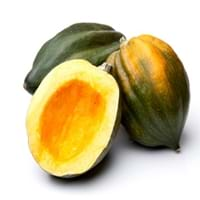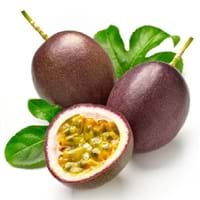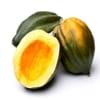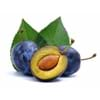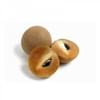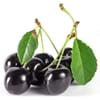Health Benefits
Anti-inflammatory properties, Arthritis treatment, Regulates Blood Sugar
Asthma treatment, Heart care, Regulates Blood Sugar, Muscle pain relief, Reduces nervous tension
General Benefits
Boosts immune system, Controls blood sugar levels, Digestive aid
Boosts immune system, Controls blood pressure, Digestive aid, Fights against infections, Helps in weight loss
Skin Benefits
Nourishes skin, Protects skin from oxidative stress
Anti-aging benefits, Skin revitalization
Hair Benefits
Prevents hair loss, Promotes longer and healthier hair, Regulates hair growth
Protects hair
Allergy Symptoms
Asthma, Red rash, Swelling of mouth, tongue or lips
Anaphylaxis, Breathing difficulty, Decrease in blood pressure, Dizziness, Skin rash, Swelling of face, Swelling of mouth, tongue or lips
Side Effects
Diarrhoea, Vomiting
Stressed heart, Nausea, Vomiting, Possibly unsafe during pregnancy
Best Time to Eat
Along with meal, As a snack in the late afternoon, Don't eat after meal, Eat the fresh ones, avoid mixing with any other foods, don't eat after meal.
As a snack in the late afternoon, Don't consume at night and before bed, Morning time (before lunch), Strictly avoid empty stomach
Vitamin B5 (Pantothenic Acid)
Not Available
Vitamin C (Ascorbic Acid)
Vitamin E (Tocopherole)
Not Available
Vitamin K (Phyllochinone)
Not Available
Lutein+Zeaxanthin
Not Available
Calories in Fresh Fruit with Peel
Not Available
Calories in Fresh Fruit without Peel
Not Available
Calories in Frozen Form
Not Available
Season
Winter
All seasons
Varieties
Bush Table Queen, Heirloom Table Queen, Festival Hybrid, Early Acorn Hybrid, Table Ace, Ebony and Cream of the Crop
Australian Purple, Common Purple, Kapoho Selection, Pratt Hybrid, University Selection No. B-74, Waimanalo Selection and Yee Selection
Color
Dark green, Green-yellow, Orange green
Purple, Yellow
Inside Color
Yellow
Yellow
Taste
Sweetish
Sweet, Tart
Origin
Central America, North America, Unknown
Argentina, Brazil, Paraguay
Grows on
Vines
Not Available
Soil Type
Well-drained
Sandy loam
Climatic Conditions
Cold, Sunny
Frost free, Sunny, Warm
Facts about
- It was named as Acorn Squash for its resemblance to a large ribbed acorn.
- It is said that squash was being grown in Mexico as long as 10,000 years ago.
- It was the first food cultivated by native American Indians.
- Passion fruit tree can grow up to 20 feet in a year.
- More than 200 species of passion fruit are found near Amazon river.
- Oil extracted from its seeds is used in various cosmetics.
Top Producer
China
Brazil
Other Countries
Egypt, India, Iran, Italy, Mexico, Russia, Turkey, Ukraine, United States of America
Colombia, Ecuador, Indonesia, Kenya, Peru
Top Importer
Costa Rica
Brazil
Top Exporter
United States of America
Ecuador
Botanical Name
Cucurbita Pepo
Passiflora edulis
Synonym
Winter Squash
Passiflora edulis f. edulis or Passiflora edulis f. flavicarpa
Subkingdom
Tracheobionta
Tracheobionta
Division
Magnoliophyta
Magnoliophyta
Class
Magnoliopsida
Magnoliopsida
Subclass
Dillenhidae
Dillenhidae
Order
Cucurbitales
Malpighiales
Family
Cucurbitaceae
Passifloraceae
Genus
Cucurbita
Passiflora
Generic Group
Not Available
Passion Flower
Compare Acorn squash and Passionfruit
It is important compare Acorn squash and Passionfruit as both the fruits have a different nutritional value. Their comparison can be done on the basis of their vitamin and mineral content, calories, benefits as well as characteristics, making it easier for us to choose the best fruit for our diet. Their general health benefits are as follows:
Acorn squash Benefits: boosts immune system, controls blood sugar levels and digestive aid.
Passionfruit Benefits: boosts immune system, controls blood pressure, digestive aid, fights against infections and helps in weight loss.
Fruits are also used as a remedy for various hair problems. The hair benefits of Acorn squash are: prevents hair loss, promotes longer and healthier hair and regulates hair growth and hair benefits of Passionfruit are: protects hair. Some fruits are known to cause allergic reactions. The allergy symptoms of first fruit are: asthma, red rash and swelling of mouth, tongue or lips and the symptoms of second fruit are: anaphylaxis, breathing difficulty, decrease in blood pressure, dizziness, skin rash, swelling of face and swelling of mouth, tongue or lips. Get sorted Acorn squash vs Passionfruit comparison with the help of fruit comparison tool by fruitvs.com.
